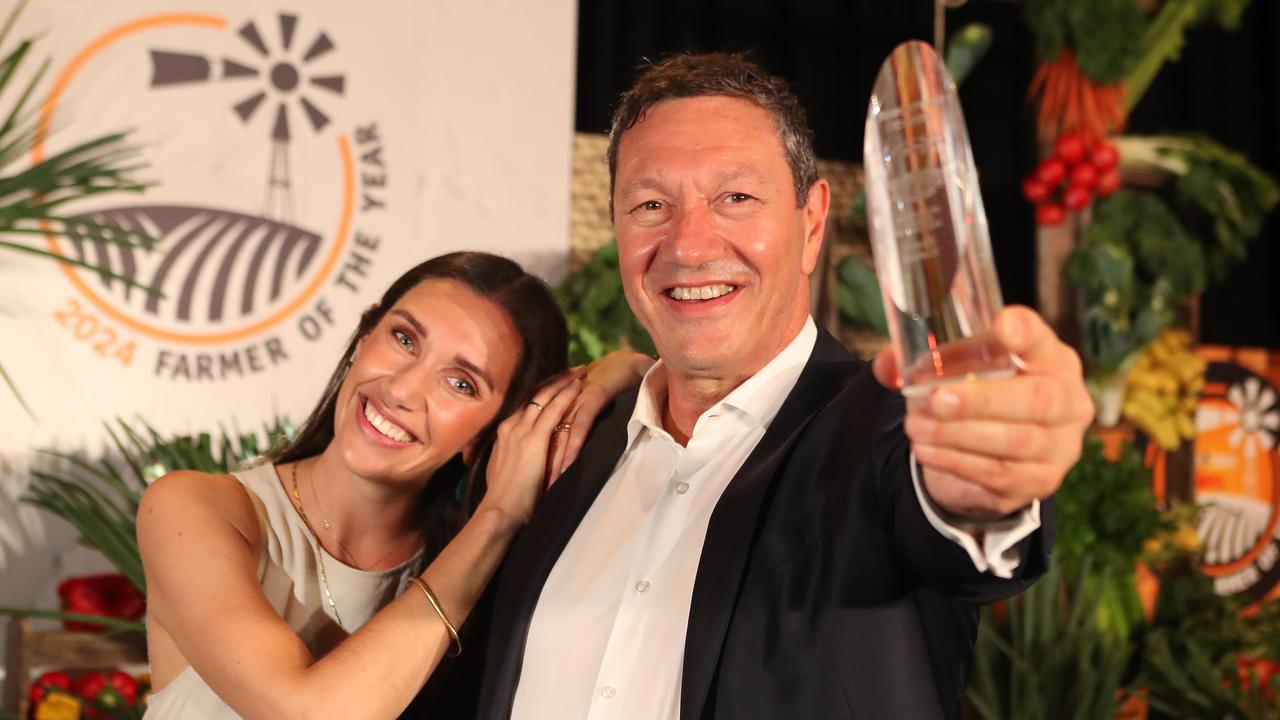Lighthouse olive oil on the Bellarine Peninsula shines a light
RAY Beedon turns a tap and out pours liquid amber.

RAY Beedon turns a tap and out pours liquid amber.
“Taste this and you’ll get peppery overtones,” he says.
Pouring another, he points out the grassy flavours.
This is not beer, wine, or even cider, but olive oil, not generally considered a beverage enjoyably guzzled.
But sipping the extra-virgin brew, it’s true: under Ray’s dedicated management of the Lighthouse olive trees and oil production at the 67ha Bellarine Peninsula farm, the oil — in contrast to mass produced products — has distinct overtones, a terroir, if you like, comparable to wine.
Ray has every reason to treat the 6500 olives trees — and their 8000-litre annual oil production — under his guardianship with tender loving care.
The first plantings of the grove were made in 1998 by then-owner of the property, Philip Myer, of the well-known Myer retailing family.
In 2012, the Myers gifted the $4 million property — including the olives, the Lighthouse oil brand, two homes, machinery plant, an airstrip, a shop and 100-seat restaurant — to Geelong’s Marcus Oldham College.
EARN AND LEARN
TODAY, the private agricultural college runs the Drysdale property as a commercial business, as well as a teaching facility, for agribusiness management.
While Ray manages the trees and oil production, the on-farm shop is run by Rosie Holder and the restaurant — initially opened as Kalamata, then becoming the renowned Loam — is now Oyl.
Ray started working for Philip Myer in 2001 and says olives have consumed him ever since.
“I can’t handle eating the table olives, I just don’t like the texture at all,” he says. “But the oil I just love. Olives are a mystery tree, you never know what you are going to get.”
Every year the oil tastes different, depending on the weather and variety.
Lighthouse olive oil comes from eight varieties of olive trees, planted from 1998 to the most recent plantings in 2004, with tube stock planted in spring.
With the trees yielding within the first three to five years, and yields varying as much as 25kg to 50kg per tree per season, oil production started in 2003.
GO FOR GROWTH
RAY says to establish the grove, they applied gypsum and lime to the soil, and in the early years fertigated — putting a fertiliser solution through irrigation sprays. Now the trees are established, they receive sprays of copper and Seasol a few times a year. Each year leaves and soil are analysed to see if extra nutrients are needed.
Once a year, in March, he applies a compost made from the olive waste and green mulch.
A key part of olive tree maintenance is pruning, which Ray generally does throughout the year, but ideally in winter.
Because the fruit is harvested with a tree shaker — appropriately called the Tornado — trees are pruned in a martini glass shape, for easy access.
Olives grow only on new wood — “so growth this year is fruit next year” — so pruning is crucial.
Pruning also ensures branches are left open for air and light, keeping disease and pests — specifically peacock spot and scale — at bay. Although, Ray adds, he also uses an insecticide and fungicide to ensure no spot or scale breakouts.

IN THE GROVE
RAY says olive trees dislike lots of water — in dry seasons the oil has a stronger flavour. In the initial stages of the grove, the trees were irrigated, but with the drought they stopped irrigating seven years ago and haven’t started again.
Harvest is from the end of April to mid-June. Six days a week the Tornado shakes the fruit into hoppers and within 24 hours the olives are processed. Once at the on-farm processing plant, the olives have their leaves sucked away and are washed, before being fed into a roller for crushing — “not a hammer, like some mills”.
Once crushed, the paste is fed into four 500kg heated processing bins, which begins the process of oil extraction. The paste is then pumped with 25C water into a centrifuge which, by spinning rapidly, separates the oil, waste and water. The waste is used as compost, while the water is kept and microbes are added to eat residual oil, before it is sprayed on pastures.
The process, up to this point, takes about an hour and while this oil can be consumed, it is pumped into storage tanks where it settles for six to eight weeks to ensure the “mud sediment” can be extracted. The oil storage shed has 30 stainless-steel tanks, measuring 300 litres to 25,000 litres.
BOTTLE-OH
ONCE the sediment is removed, the oil is bottled into 250ml, 500ml, one- litre, four-litre, or 20-litre containers.
The oil comes in Yellow (robust) and White (mild) label, as well as citrus, with lemons or limes added with the olives at the time of crushing.
It is at this point that Lighthouse Olive Mill shop manager Rosie Holder receives the product and sells it.
About 70 per cent of the product is sold on farm, with the remainder distributed in restaurants and shops on the Bellarine Peninsula and Geelong, costing $14 for 250ml.
“There’s a huge following in Australia for European olive oils, and people ask why ours is more expensive,” says Rosie, who also sells local food, wine and home products in the shop.
“I tell them oils made in Australia have to be tested to be called extra virgin, whereas oil that is imported does not have to be tested. They’ve discovered that some imported varieties even contain canola oil.
“Imported oil is cheap for a reason.”


